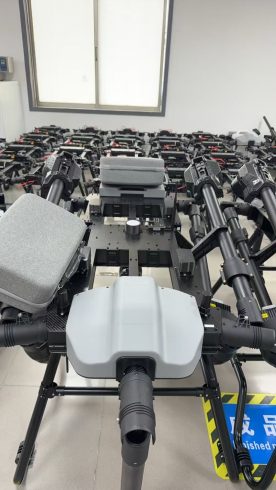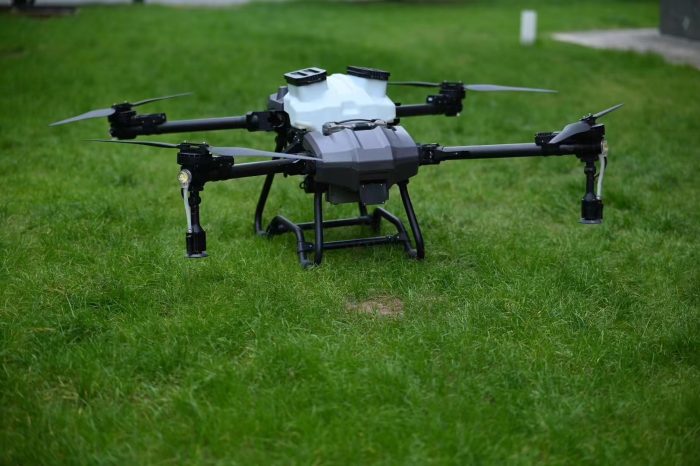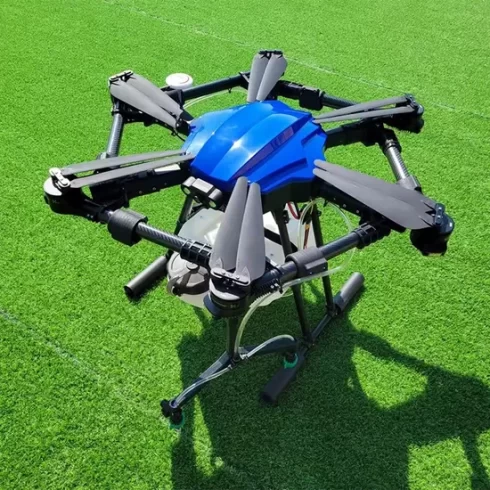![图片[1]-Using Drones for Corn Spraying: Precision, Efficiency, and Sustainability in Modern Agriculture-msoen](https://www.msoen.com/wp-content/uploads/2025/04/27fe7401e7184641-1024x768.jpg)
Corn farming, a cornerstone of global food and biofuel production, faces escalating challenges such as labor shortages, rising input costs, and environmental regulations. Traditional methods of pesticide and fertilizer application—reliant on manual labor or bulky machinery—are increasingly unsustainable. Drones for corn spraying are emerging as a transformative solution, combining cutting-edge technology with precision agriculture to address these challenges while optimizing yields and reducing ecological footprints. This article explores how drones are revolutionizing cornfield management, their unique advantages, and the key considerations for farmers.
Why Cornfields Need Drone Sprayers
Cornfields are vast, dense, and often uneven, creating logistical hurdles for conventional methods:
- Labor-Intensive Challenges: Manual spraying is time-consuming, physically demanding, and exposes workers to harmful chemicals.
- Crop Sensitivity: Corn’s tall, dense canopy and rapid growth cycles demand timely interventions to combat pests, diseases, and nutrient deficiencies.
- Environmental Concerns: Overuse of chemicals leads to runoff, soil degradation, and non-compliance with regulations.
Drones offer a scalable, safe, and eco-friendly alternative:
- Targeted Application: Minimize chemical waste by focusing only on high-risk zones.
- Timely Interventions: Rapid response to pest outbreaks prevents yield losses.
- Access to Challenging Terrain: Navigate uneven fields and dense foliage with ease.
Key Features of Corn-Optimized Drone Sprayers
- Adaptation to Corn’s Growth Cycle
Corn’s vertical growth (from seedlings to tasseling) demands flexible drone systems:
- Height-Adjustable Nozzles: Automatically adjust altitude (1–10 meters) to target different canopy layers.
- Penetrating Spray Technology: Air-assisted nozzles ensure chemicals reach lower leaves and soil for root protection.
- Obstacle Avoidance: LiDAR and thermal sensors detect stalks, irrigation lines, and debris to prevent collisions.
- Precision Spraying Systems
- Variable Rate Control: Sync spray output with real-time data on pest density or soil moisture.
- Multispectral Imaging: Use NDVI maps to identify stressed areas (e.g., waterlogged roots or nitrogen deficiencies).
- Anti-Drift Nozzles: Reduce mist drift to protect neighboring crops and comply with regulations.
- AI-Driven Pest and Disease Detection
Advanced drones integrate AI to enhance decision-making:
- Insect Egg Detection: Algorithms spot pest eggs (e.g., corn borers) before hatching.
- Fungal Infection Identification: Machine learning models flag early signs of diseases like northern corn leaf blight.
- Swarm Coordination: Fleets of drones automate spraying across large-scale farms.
- Extended Flight Time and Power
Cornfields require repeated applications during critical growth stages:
- 90–120 Minute Flight Time: Covers 15–20 hectares per charge, ideal for seasonal peak demand.
- Fast-Swap Battery Packs: Enable uninterrupted spraying during tasseling or silk emergence.
- Solar-Compatible Designs: Extend uptime in remote, sun-rich regions.
Benefits of Drone Spraying in Corn Farming
- Reduced Chemical Usage
Targeted application cuts pesticide use by 30–50%, lowering costs and minimizing environmental harm. - Labor Efficiency
Replace manual crews with drone operators, saving time and reducing health risks from chemical exposure. - Higher Yields
Timely pest and disease control protect corn yields, boosting productivity by up to 20%. - Compliance and Sustainability
- Meet strict regulations on chemical runoff and water quality.
- Align with sustainability goals (e.g., UN SDG 12: Responsible Consumption).
Application Scenarios in Corn Cultivation
- Early Growth Stages
Monitor seedling health and apply starter fertilizers uniformly across rows. - Vegetative Phase
Target foliar diseases like gray leaf spot with precision, preventing outbreaks. - Pre-Tasseling
Control weeds and pests without damaging critical reproductive structures.
Future Trends in Corn Drone Technology
- Hydrogen Fuel Cells: Extend flight times to 4+ hours for marathon spraying sessions.
- Under-Canopy Drones: Specialized models to treat lower canopy layers without disturbing foliage.
- Blockchain Integration: Track chemical usage and harvest quality for premium market access.
Implementing Drone Sprayers: A Checklist
- Assess field size, pest history, and growth stage requirements.
- Choose drones with height-adjustable nozzles, obstacle avoidance, and AI analytics.
- Train operators on software for geo-fencing and variable-rate spraying.
- Partner with local regulators to ensure compliance with pesticide guidelines.
Conclusion
Drones for corn spraying are redefining efficiency and sustainability in large-scale agriculture. By combining precision, scalability, and adaptability, these technologies empower farmers to tackle labor challenges, optimize inputs, and protect yields. As AI and renewable energy innovations advance, drone sprayers will become indispensable tools for feeding a growing population while preserving natural resources.
Key Takeaways:
- Corn-specific drones excel in dense canopies with height adjustment and penetrating spray tech.
- AI-driven features optimize chemical use, reduce labor, and boost yields.
- Future advancements like hydrogen fuel cells will enhance endurance and scalability.
Investing in drone sprayers for cornfields is a strategic leap toward smarter, sustainable agriculture—one where every drop of pesticide and every ear of corn is optimized for maximum impact.









暂无评论内容